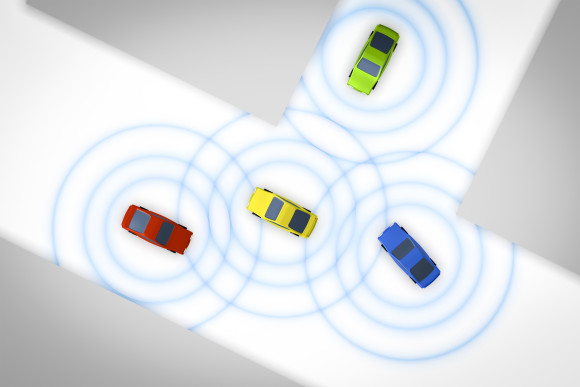The advance of driverless cars and the prospect that they will disrupt property/casualty insurance and change the way autos are insured has created plenty of industry anxiety. Even before that point, however, cars with drivers will likely share the road with driverless cars as the new technology irons out the kinks.
To all who are worried about this, Martin Frappolli, senior director of Knowledge Resources at The Institutes, recently offered some reassuring words.
“We wouldn’t be making this change if autonomous cars weren’t several magnitudes safer than cars piloted by humans,” Frappolli argued. “I am hopeful of a future where the frequency of accidents is drastically reduced, even if we live through this messy time of human piloted cars and driverless cars on the road at the same time.”
Frappolli, speaking during the RIMS 2017 annual conference in Philadelphia, acknowledged that the technology will be disruptive to industry practices and society in general. However, he said, transformational changes like this have happened in the past and reduced previous risk levels in the process.
“We got through horse and buggy [and] cars at the same time, too,” Frappolli said.
Still, driverless cars will have an impact on multiple levels. Frappolli pointed out, for example, that the advance of driverless cars will transform urban planning, where traffic lights and road systems will have to be adjusted and allow for the smoothing of traffic as autonomous vehicles talk to each other and coordinate their movements.
“Urban planning now may not make sense in the future,” Frappolli said, “with design and systems that could become obsolete.”
Imperfect Driverless Cars
Frappolli noted that these changes won’t be perfect. If they “aren’t quite as error-free as we would hope them to be, reduced traffic congestion could [not only] lead to the revival of inner cities but also to a boom in the suburbs, if you could relax or sleep in the car” as it moves from point A to B.
“Plenty of fun stuff may come out of this,” Frappolli said. “Right now you must be legally and physically capable to pilot an automobile. In the future, a driverless car can take any passenger to any destination at any time.”
Frappolli pointed out that driverless cars will allow people to take liberties they can’t with today’s driver-operated models, such as drinking substantial alcohol because accidents aren’t a risk if you’re not the driver.
Cars today are made wth added weight to increase safety in the event of a crash. “But without fear of crashing cars, [they] can be made lighter and fuel efficient [and] good for the environment,” Frappolli said.
Frappolli added that Google, Tesla and others pursuing driverless car technologies will challenge entrenched industries, but also create new opportunities as their technology evolves.
One big change that driverless cars will bring, according to Frappolli—liability will shift to the manufacturer from the driver over time.
Topics Personal Auto
Was this article valuable?
Here are more articles you may enjoy.



 One of Highest Property Claims Severity Recorded in Q3 on Low Volume, Says Verisk
One of Highest Property Claims Severity Recorded in Q3 on Low Volume, Says Verisk  Florida Jury Returns $779M Verdict for Family of Security Guard Killed at Gambling Cafe
Florida Jury Returns $779M Verdict for Family of Security Guard Killed at Gambling Cafe  Hartford: 10-Year Analysis Shows Shifts in Common, Expensive Small-Business Claims
Hartford: 10-Year Analysis Shows Shifts in Common, Expensive Small-Business Claims  After Years of Pushing Rate Hikes, Florida’s Citizens Now Wants HO Rate Decrease
After Years of Pushing Rate Hikes, Florida’s Citizens Now Wants HO Rate Decrease 

